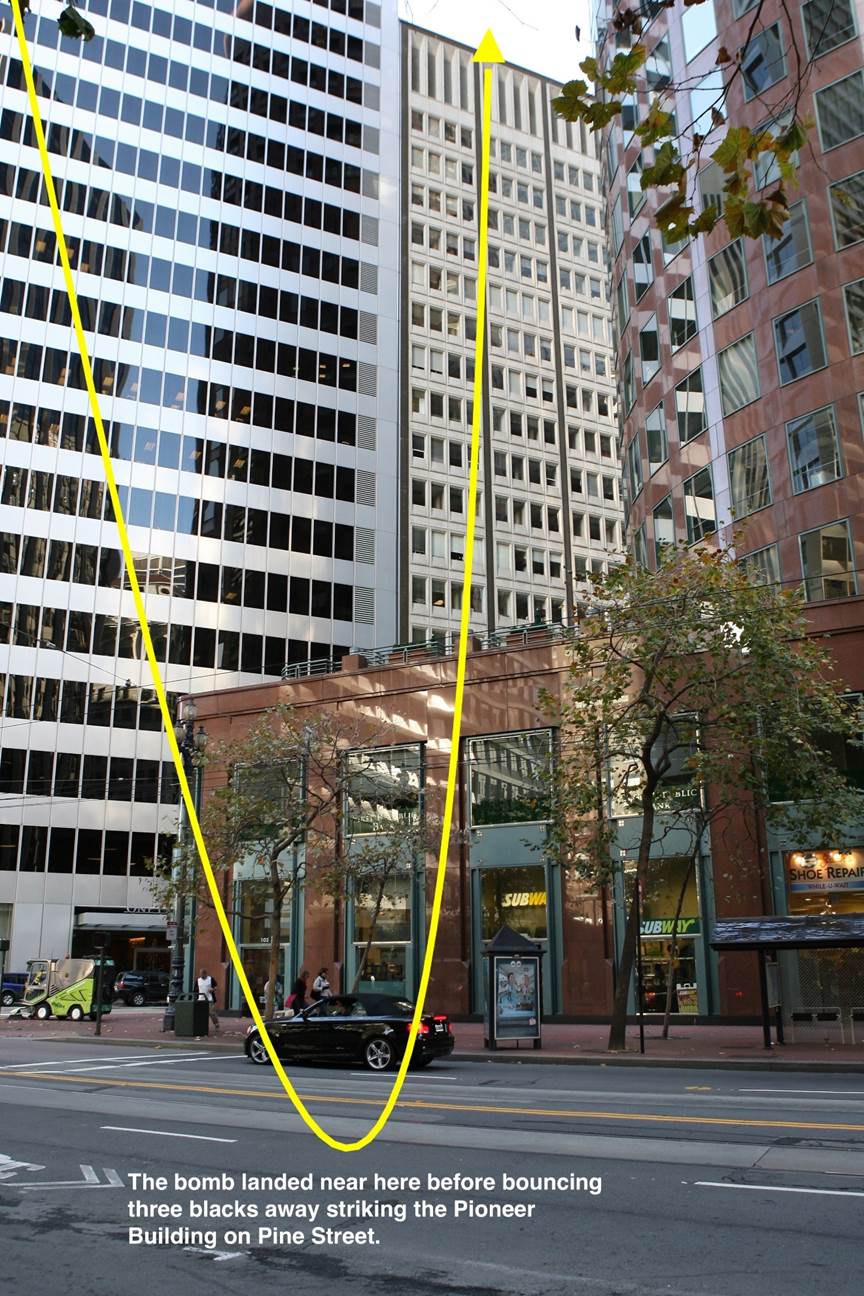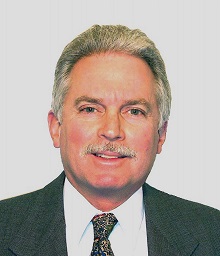
60 th Anniversary of the US Navy “Bombing” of San Francisco
Report and photos by Phil Pasquini

San Francisco: A little known and underappreciated historical event in San Francisco history occurred sixty years ago this week at high noon on Friday, July 19, 1963. A Navy A4A Skyhawk attack aircraft flying at 25,000 feet over San Francisco in restricted airspace piloted by Navy Reserve pilot Lt Richard A. Kines accidentally dropped one of its six 25-pound non-explosive practice bombs that had self-released from its rack and headed down to the busy city streets below.
The errant bomb crashed moments later into the bustling noontime rush hour crowded intersection at Market and Front Streets where it landed with such impact that it created a hole in the asphalt one foot wide and four inches deep. Luckily, it missed pedestrians in the crosswalk by several yards nevertheless startling all those present.
The ricochet from the impact in turn was so massive that it launched a piece of the asphalt pavement seven stories upward and into the office window of the adjacent IBM Building where executive Bob Cuyler was just preparing to leave for lunch. Recoiling when his window suddenly exploded by the fragments impact, the startled executive was lucky to have not been harmed.
After smashing into the street, the misguided bomb itself ricocheted upwards and to its destination some three blocks away. The bomb’s new trajectory took it up and over the adjacent ten-story building, in what at the time was estimated to be a 300-foot-high arch that saw it next crashing into the Phoenix Building at 360 Pine Street.
Hitting the classic 1929 building’s fifth floor stone cornice, it broke away a chunk of decorative concrete that now accompanied the mangled bomb that fell into the streets below, where in turn it hit a Pacific Gas & Electric service truck startling the crew who were just then eating their lunch.
The entire event could surely be called “The Miracle on Market and Pine Streets.” Since having fallen from the fast-moving aircraft, the bomb had managed to crash into a busy city street at noontime avoiding harming anyone and only damaging a window, a building’s cornice and the truck.
So just how did an errant practice bomb self-release from its rack and cause all this havoc? That was the question put before a Navy investigation that concluded the fault was with the construction of the bomb wing racks made of spare parts by ground crews coupled with a faulty release mechanism. The investigators soon learned that during the week before the noontime bombing, two other bombs had fallen off Navy aircraft and into San Francisco Bay, one of them from the same aircraft involved in the Friday incident. During the investigation, ground crews complained that replacement parts for the racks were unavailable and that they were forced to cannibalize spare parts to keep the planes flying for their practice missions.
The investigators also looked at why the plane was flying over a restricted airspace above a crowded urban area in the first place since this is generally not sanctioned. They learned that the pilot, while on his way towards Alameda, had last minute orders to continue straight on his flight path leading over San Francisco when the accidental release occurred. The missing bomb was only discovered by the ground crew after the plane landed. Ironically, Lt Kines, the pilot, didn’t learn about the accidental bombing until sometime later that day when listening to his car radio.
Although the city took a direct hit that day, it is of some comfort that there have been no other bombings from the sky in San Francisco since then.
(Phil Pasquini is a freelance journalist and photographer. His reports and photographs appear in the Washington Report on Middle East Affairs and Nuze.ink. He is the author of Domes, Arches and Minarets: A History of Islamic-Inspired Buildings in America.)

